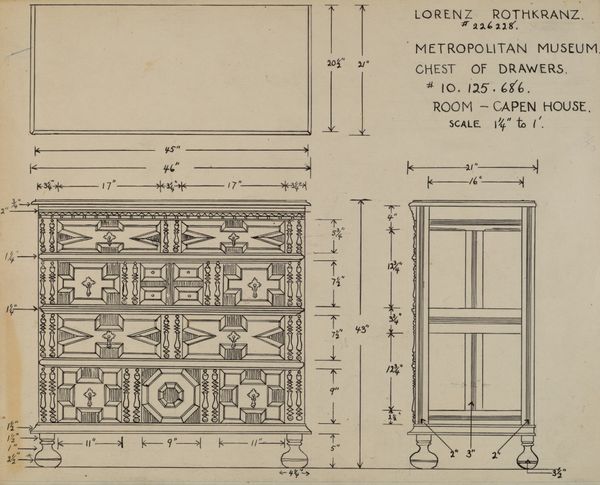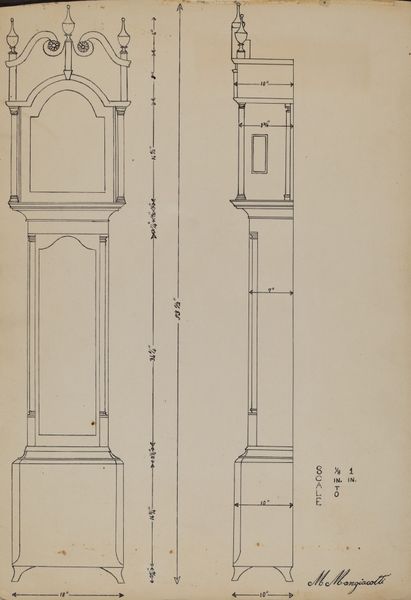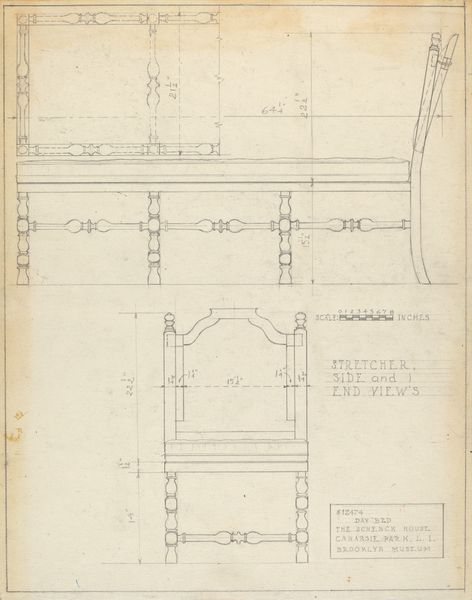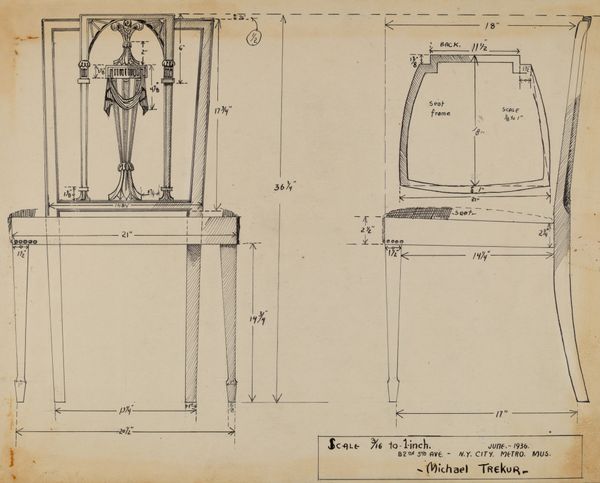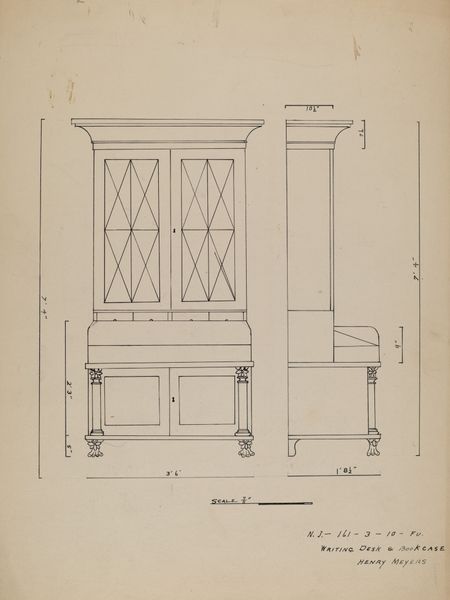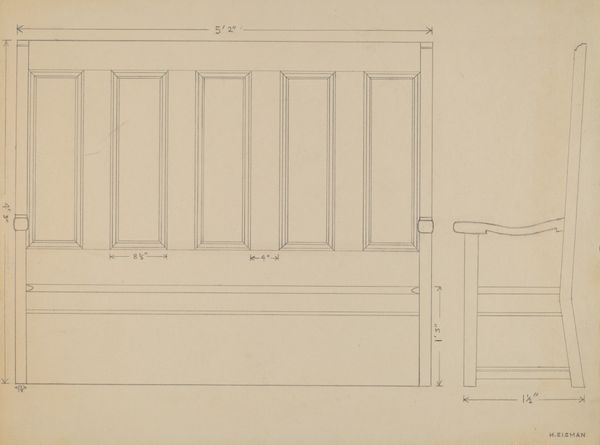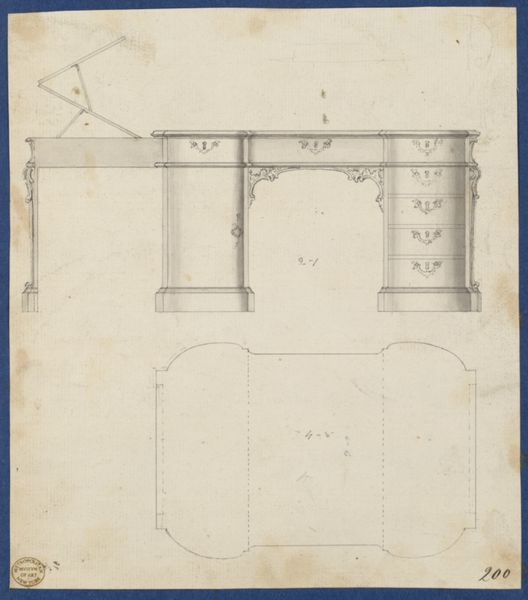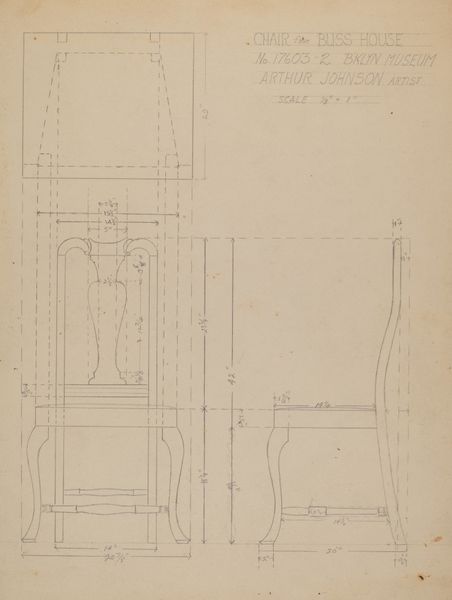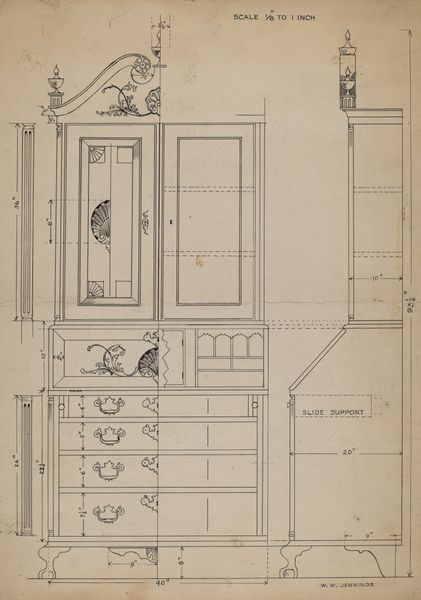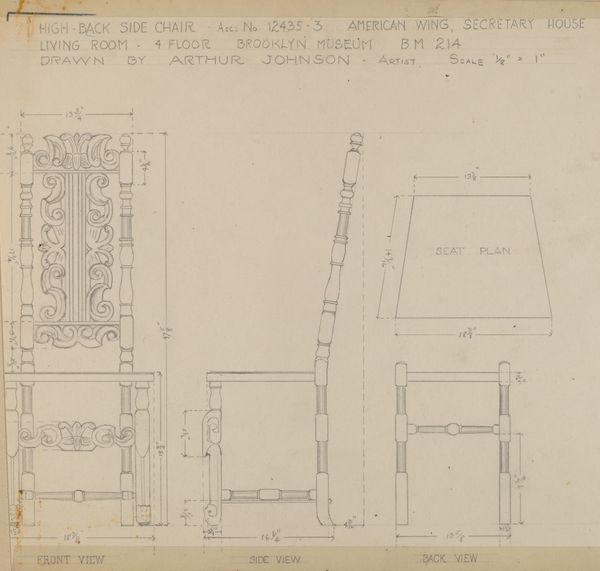
drawing, paper, architecture
#
drawing
#
paper
#
geometric
#
academic-art
#
architecture
Dimensions: overall: 23.8 x 21.1 cm (9 3/8 x 8 5/16 in.) Original IAD Object: 40"high; 30 1/2"wide; 16"deep
Copyright: National Gallery of Art: CC0 1.0
Editor: This is "Desk," a drawing on paper from 1936 by Frank Wenger. It looks like a very detailed plan for an elaborate piece of furniture, with lots of classical-looking details. I’m struck by how precise and almost cold it feels. What do you see in it? Curator: This isn't just a design for a desk, but a record of cultural memory. Observe the "imitation book ends." Why imitate? Because the *idea* of learnedness, of literature, held power. Look too, at the columnar legs, and the head incorporated in its design: is that a Greek God? It evokes power, tradition, intellect, all tied to the purpose of the desk. A place of *creation.* Do you think it succeeds in its task, this conflation of symbols? Editor: It does seem like it’s trying to be more than just a functional object. So, the symbols aren't just decorative; they are really communicating an ideal? Curator: Precisely. It speaks to the aspirational nature of the era, even in the face of economic hardship. The symbols convey a desired continuity with a past of greatness. Does the crispness of the lines undermine that feeling, do you think? Editor: I think maybe it does. The precision almost feels like it’s trying too hard. A sketch might have felt more genuine. Curator: And that difference itself speaks to an important question. What is authentic in imagery? Is the authentic the genuine, the effortless…or the genuine feeling, achieved through careful deployment of established images, well-worn cultural forms? Editor: I hadn’t thought about it that way before, considering authenticity as a feeling generated through established forms. This drawing gives me a lot to think about, regarding the power of symbols in design. Curator: Indeed, it reveals how objects can be more than their function; they become vessels of cultural aspirations.
Comments
No comments
Be the first to comment and join the conversation on the ultimate creative platform.
